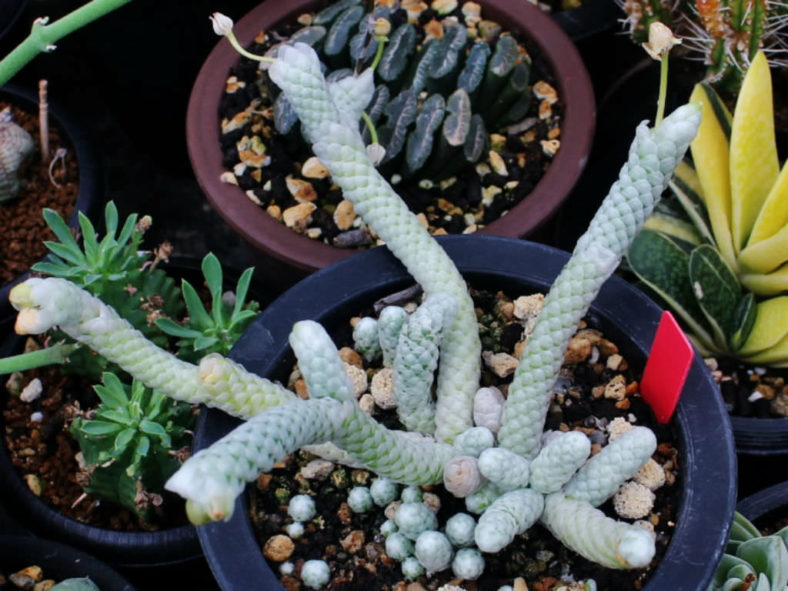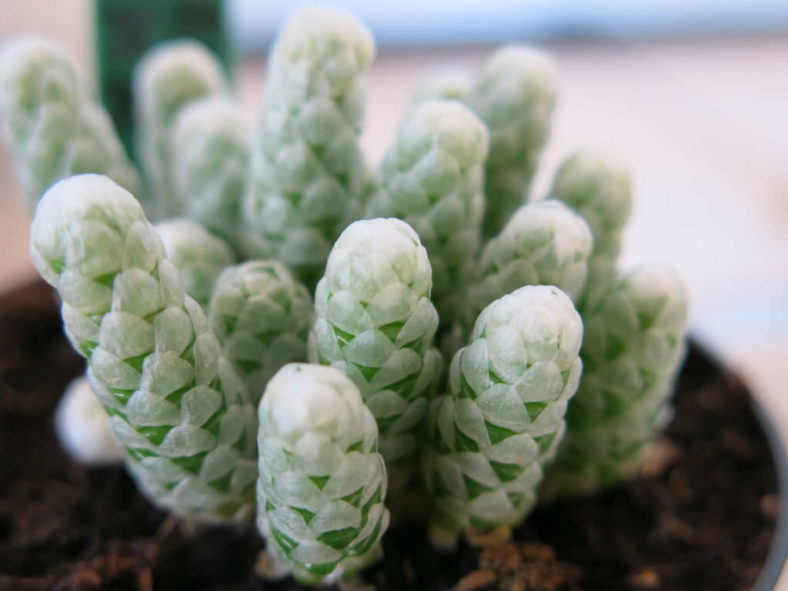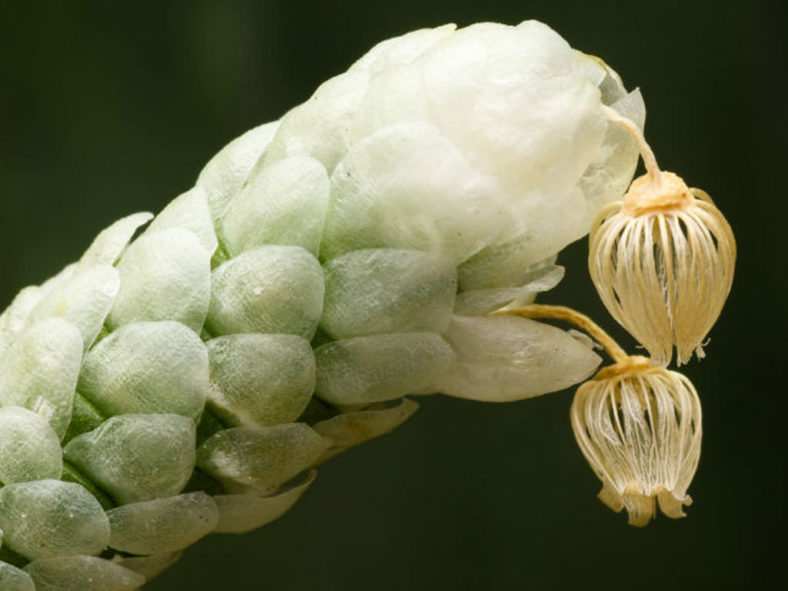Scientific Name
Avonia papyracea (E.Mey. ex Fenzl) G.D.Rowley
Synonym(s)
Anacampseros meyeri var. minor, Anacampseros papyracea, Anacampseros papyracea subsp. papyracea
Scientific Classification
Family: Anacampserotaceae
Genus: Avonia
Etymology
The specific epithet "papyracea" (pronounced "pap-ih-REE-see-uh") means "made of papyrus" and refers to the white, papery, overlapping scales, which hide the leaves of this species.
Origin
Avonia papyracea is endemic to South Africa. It occurs in the dry semi-arid region of the Little Karoo and the Great Karoo.
Description
Avonia papyracea, also known as Anacampseros papyracea, is a dwarf succulent with several sprawling, stout, succulent branches that radiate from a tuberous root. It can grow up to 3.2 inches (8 cm) tall. The branches bear minute, closely packed leaves hidden by white, papery, overlapping scales. The tiny leaves are fleshy and green, measuring up to 0.3 inches (0.8 cm) in length and 0.1 inches (0.3 cm) in width.
The flowers are scented, creamy-white, with five rounded petals positioned at right angles to what appears to be a central ring of yellow anthers. They appear in summer on short stalks at branch tips, typically solitary, and most last only 2 to 4 hours.

Hardiness
USDA hardiness zones 9b to 11b: from 25°F (-3.9°C) to 50°F (10°C).
How to Grow and Care
Although regarded as a choice and difficult plant, it is relatively easy to grow. Avonias grow very slowly and require careful cultivation. Clustering in cultivation, if grown correctly, will reward the grower with generous displays of tiny flowers. These plants grow well at moderate to cooler temperatures in partial sun. Bright light enhances leaf colors and makes for a compact plant. Depending on the species, they enjoy gritty, free-draining soil with added organic material and low to moderate watering.
The seeds germinate quickly at temperatures between 59°F and 70°F (15°C and 21°C). In cultivation, the young plants develop much quicker than in their natural surroundings, where they do not have ample water supply. Generally, they are not easy to raise from seed because too much water kills them immediately, which also happens when they are not watered.
Learn more at How to Grow and Care for Avonia.
Links
- Back to genus Avonia
- Succupedia: Browse succulents by Scientific Name, Common Name, Genus, Family, USDA Hardiness Zone, Origin, or cacti by Genus
Photo Gallery
Click on a photo to see a larger version.

